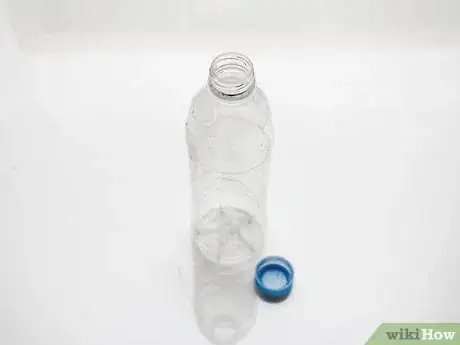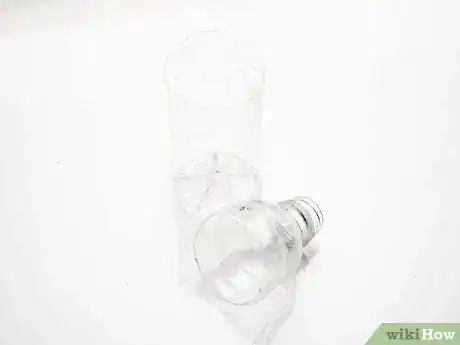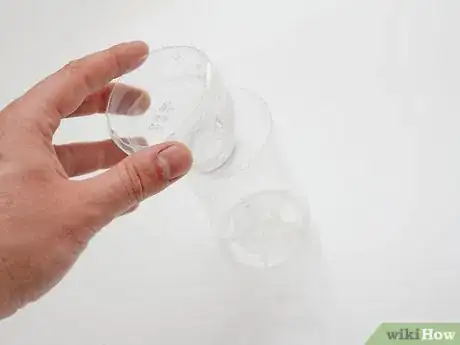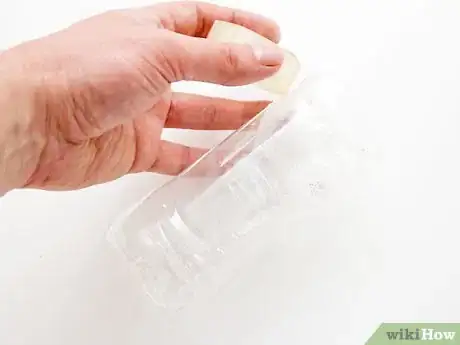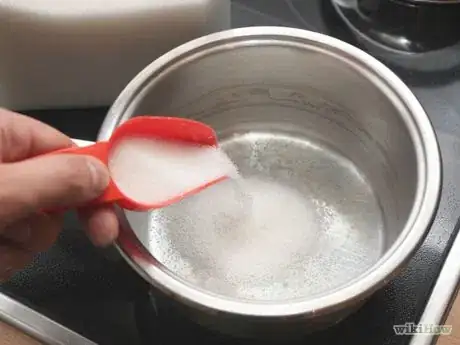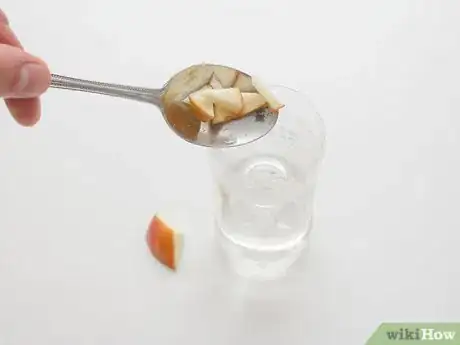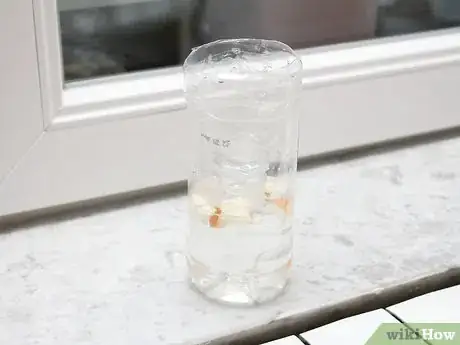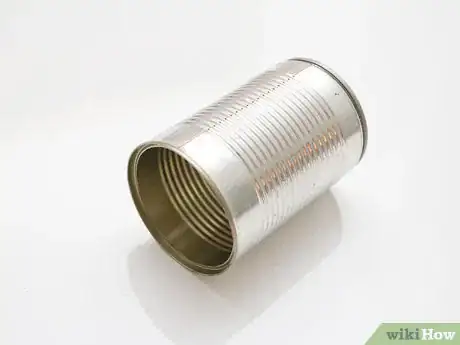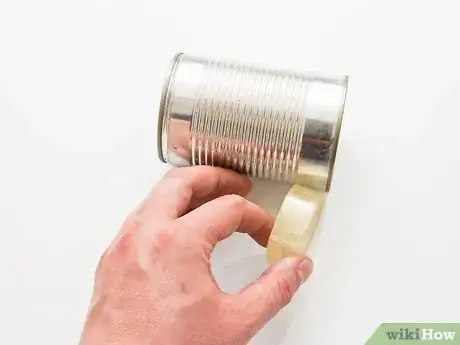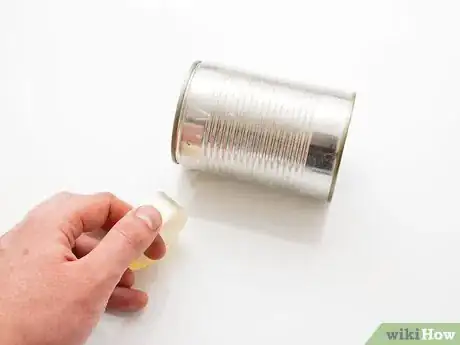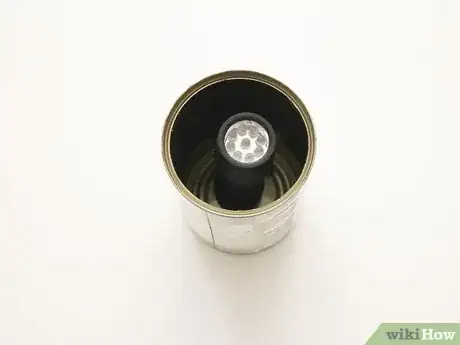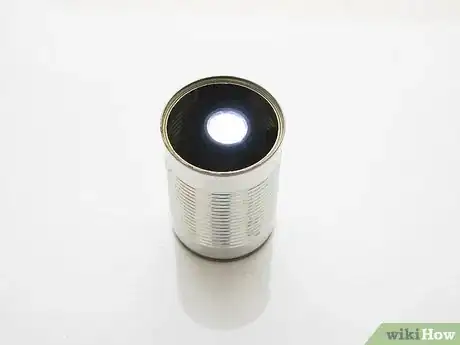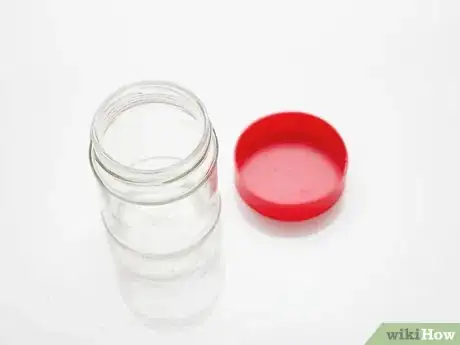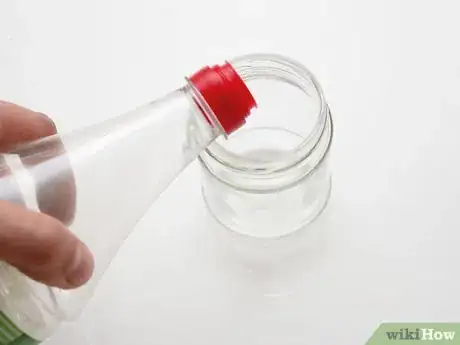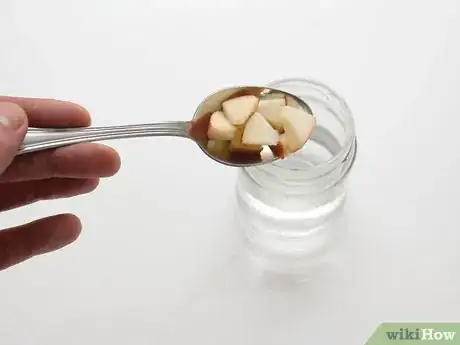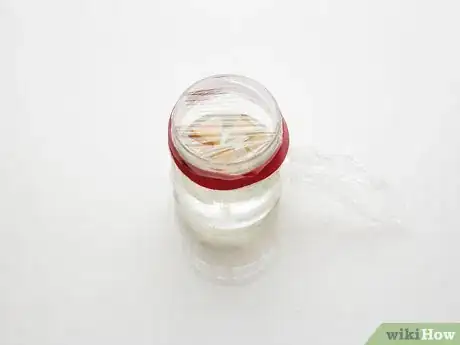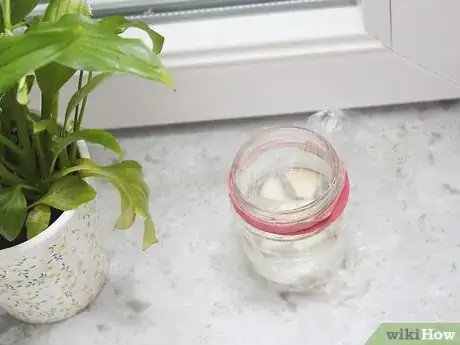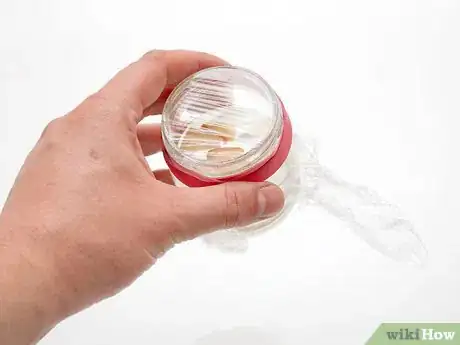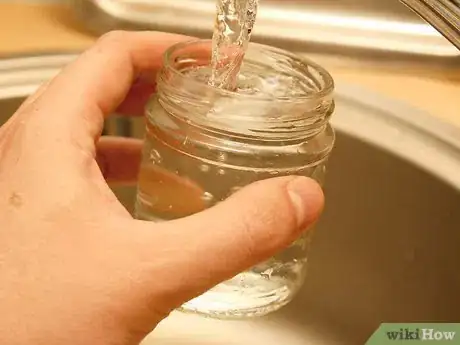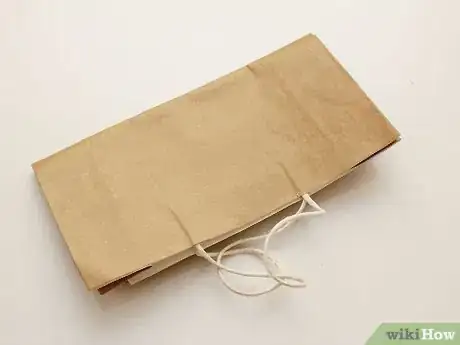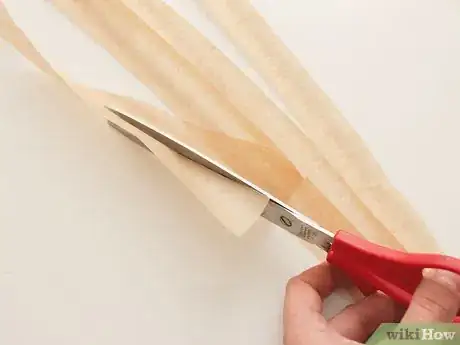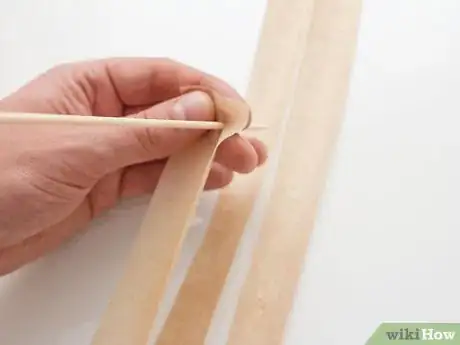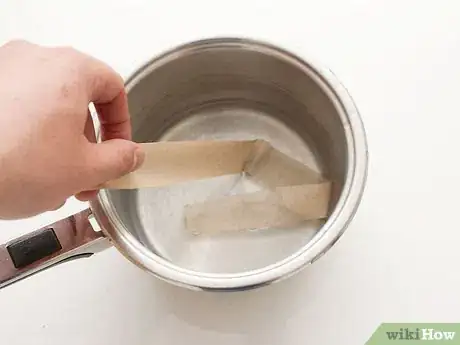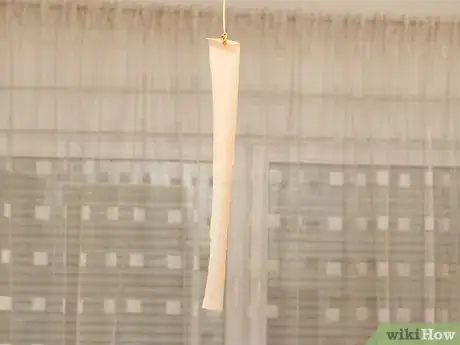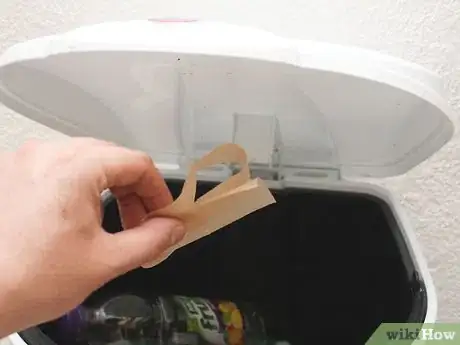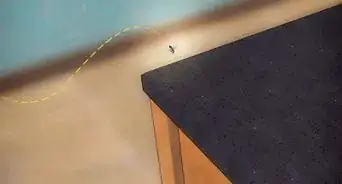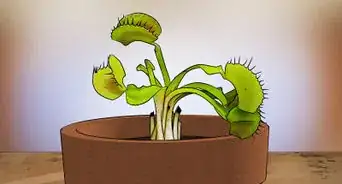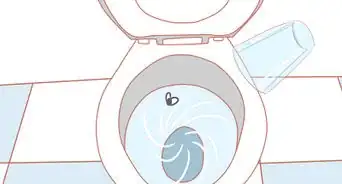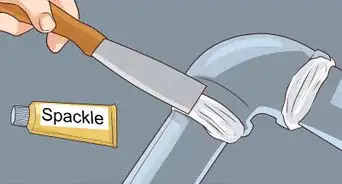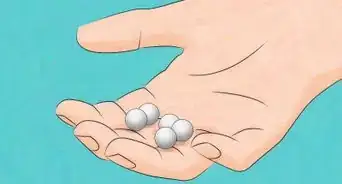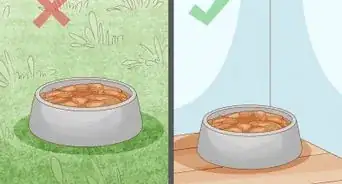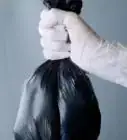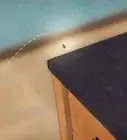This article was co-authored by Joshua Bloom. Joshua Bloom is a Pest Control Specialist and the Vice President of Operations of Standard Pest Management, a pest control company based in New York City. He has over 20 years of experience in the pest control industry and specializes in commercial and large facility pest control management. Standard Pest Control also specializes in ant, bed bug, cockroach, fly, and rodent control. Joshua is licensed by the NYSDEC (New York State Department of Environmental Conservation) for termite control.
There are 13 references cited in this article, which can be found at the bottom of the page.
wikiHow marks an article as reader-approved once it receives enough positive feedback. This article has 29 testimonials from our readers, earning it our reader-approved status.
This article has been viewed 1,552,433 times.
Flies can be a problem, whether they are in the house, on the porch, or in your garden. While there are many traps and sprays you can buy in stores, they can often contain chemicals which smell bad and are dangerous to your health. Fly swatters are great for a lone fly, but an onslaught can be hard to contain. A great, natural solution to your fly problem is to make your own fly trap. In a few, quick steps, you can be managing the problem, and on your way to eradicating every fly in sight.
Steps
Making a Bottle Fly Trap
-
1Grab an empty soda bottle. This can be one that is used, or simply pour out the soda. Make sure that all the soda has been removed and that it has been washed out with warm water and remove the cap. [1]
-
2Cut the top off from the bottle. Use a pair of scissors. Poke a hole through the bottle using one of the blades on the scissors. Do this right where the funnel of the soda bottle ends, and where the large shaft begins (near the middle of the bottle).[2]
- After you have poked the hole in the bottle, insert your scissors and cut around the bottle. Cut off the entire top funnel, so that what you have left are two separated pieces: funnel (top) and shaft (bottom).
- Try to cut as close to the edge of the funnel as possible, otherwise, when you flip the funnel upside-down it won't stay in place.
- You can also use a sharp knife to cut the top funnel off, but make sure not to cut yourself. If you are doing this project with your kids, it is better to use a safe pair of scissors.
Advertisement -
3Flip the cut piece over. Stick it into the bottom half of the bottle. If you cut close enough to the edge of the funnel, it should stick inside as you slide it in.
-
4Join the two cut edges of the bottle parts together. The simplest and most effective way is to staple the edges together. Simply staple three or four times around the bottle, equidistant from one another. [3]
- If this project is done with children, an adult should staple the two parts together. If you do not have a stapler, the following two options work fine as well.
- Tape is another good option, but make sure that the tape is water resistant. Apply three or four pieces of tape around the funnel.
- If you wish to [Use Super Glue|use superglue]], or regular glue, that will also have to be water resistant. Before you add the funnel, apply a thin layer of glue around the top inside of the base. Then insert the funnel upside-down. Use your fingers and press the funnel with the base. Hold the two pieces into place until it is dry.
-
5Create a melted sugar mixture. Pour five tablespoons of sugar into a pot. Place the pot on a stove top. Flatten the sugar so that it lies evenly across the bottom of the pot.[4]
- Pour in enough water to cover the top of the sugar. Slowly heat the mixture over medium-high heat until it boils.
- Stir the mixture well. Dissolving sugar in hot/warm tap water makes sweet water but boiling makes "syrup", a more concentrated attractant. Let the liquid sit until it goes from hot to warm.
-
6Spoon the liquid into the funneled end of the bottle. Try to drip it down the edges of the funnel so that when the flies come towards the funnel, they will stick right from the start.
-
7Use another type of bait. You can slice up some apple chunks, and push them through the bottom of the funnel. A piece of raw meat will work as well, as do a few tablespoons of old wine. You can also simply add in water mixed with either sugar or honey.
-
8Add in vinegar. If your bait of choice is a liquid, add in a few teaspoons of vinegar, preferably white vinegar. This will help keep bees and other unwanted insects away from the trap.[5]
-
9Put the bottle in a sunny spot. This will help the fruit/meat to rot and thereby increase the likelihood of flies smelling the bait. It will also cause liquid mixtures to evaporate, thereby creating a pheromone, drawing the flies towards the trap. Marvel at your new fly trap as it catches flies.
-
10Repeatedly breathe into the bottle. This will improve your results because insects are attracted to heat and carbon dioxide. You can also rub the bottle in between your two hands to create more heat.
-
11Throw the bottle away. Do your best to remove the flies and re-use the bottle as many times as possible. After some time, you may need to throw the bottle away, and create another one. The trap might eventually become too tough to use because of the sun. Make sure to wear gloves so you do not have to handle dead flies with your hands.
Creating a Tin Can Fly Trap
-
1Find a suitable can. A standard size dog food can or a soup can are perfect. Remove the paper label, the can lid, and wash it clean with warm water. Dry before proceeding to the next step.
-
2Cut out lengths of duct tape. They need to be long enough to wind around the can. Try not to touch the sticky ends, or get them dirty, otherwise the trap will not work.
-
3Wrap the lengths around the can. Press the duck tape tightly against the can with your hands. Give the duck tape a gentle rub in order to transfer the stickiness.[6]
-
4Remove the duct tape from the can. The surface of the can will now be sticky. Gently touch the can to see how sticky it is. If it is not very sticky, repeat with new lengths of duct tape.
-
5Tape a small flashlight to the underside of a can lid. Put the lid over the base of the flashlight. This will create a base for the flytrap. It is best if you can find a UV flashlight, as flies are mostly attracted to UV light.[7]
-
6Put the can outside at night. Sit the can upright so that all the stickiness is available to catch flies. Switch on the flashlight and place it into the can. Make sure that the flashlight is upright, and has new batteries in it.[8]
-
7Wait for the flies. They'll be attracted to the light but get stuck on the sticky sides of the can.
-
8Replace the can. If you have successfully caught flies with the can, you can try and empty it and re-use the can. Make sure to use a pair of gloves when you contact the can, so you do not have to touch the flies. After some time, if it doesn't work as well, you may need to replace it with a new can. You can place it in a bag before you put it in the trash.[9]
- You can also try to re-stick it with new tape.
Inventing a Plastic/Glass Jar Fly Trap
-
1Obtain a small container. This can be either a glass jar (jelly jar) or a plastic container, something you might put nuts or peanut butter in. If the container or jar has a lid, remove it.
-
2Add vinegar to the container. Buy a jar of apple vinegar and pour about an inch or so of it into the container. This will attract the flies to the container.[10]
-
3Add dish soap to the vinegar. Use a few drops of dish detergent or soap to the vinegar to break the surface tension. Otherwise, the flies can use their legs to stand on top of the vinegar and drink it up.[11]
-
4Add fruit/raw meat. Instead of adding the vinegar/dish soap mixture to your container, fruit and meat are also okay options. Simply chop up what you want to add in, and place it in the bottom of the container. The rotting smell of the food will attract the flies to the container.[12]
- Switch up your bait depending on what type of flies you're trying to catch. For fruit flies, place bananas in the trap, or use raw potato if you need to catch fungus gnats. For house flies, you can use anything odiferous.[13]
-
5Cover the container in plastic wrap. Rip off a piece that is at least three inches by three inches. Press the wrap tightly around the rim of the container with your hands. If the plastic wrap is not staying in place, add a few pieces of tape, or place a rubber band around the wrap.[14]
-
6Poke holes in the plastic wrap. Use a toothpick, scissors, knife, etc. to poke at least four small holes in the plastic wrap. This will allow the flies to gain entry into the trap.[15]
-
7Place the trap outside. The flies will enter the trap through the holes. However, it will be almost impossible for them to escape, because they will not be able to find the holes. They will also be inclined to snack on whatever is in the container.
-
8Kill the flies. Some of the flies will have likely died in the trap over a period of time. However, some other flies will likely still be eating whatever you put in the container. Bring the trap inside of the house and place it near the sink. Turn on the hot water in your sink. Make sure that the stopper is down, so your sink fills up. When it is filled, place the container in the sink for ten minutes. This will drown the flies.
-
9Throw out the dead flies. Remove the plastic wrap and throw it away. Put the container in your trash can and bang the container against the inside of the can. Do this until all the flies have been removed, along with whatever mixture you put in there to begin with.[16]
-
10Disinfect the container. You can do this by simply washing the container out with soap and warm water. You can also use certain safe chemicals which will make sure the container is clean and ready to use again. After the container is clean, you can use it again to make another trap.
Producing Your Own Sticky Fly Paper
-
1Get out a grocery store paper bag. The bag should generally should be tall, as you will need to make long strips of sticky fly paper. Do not use plastic bags, otherwise the sticky mixture won't stick to the plastic.
-
2Cut out strips of paper. Use a pair of scissors, and cut out strips that are about one inch by six inches. You will need about four-five of these strips. After you have them cut out, lay them flat on the table.[17]
-
3Poke holes in the strips. Use a pair of scissors, or a knife and poke a hole about one inch from the end of the strip. Do this to each strip. You can also use a hole-punch if you have one of those as well.[18]
-
4Tie a string through the hole. Cut a piece of string/wire that is at least six inches long. You will need strings for each strip of paper. Feed the string/wire through the hole and tie a knot.
-
5Make a sugar mixture. Place one part sugar, one part honey, and one part water into a saucepan. Put the saucepan on the stove, and heat on medium-high until the ingredients are mixed in well. After the ingredients are mixed, let the mixture cool to room temperature.[19]
-
6Dip the paper into the mixture. Place each strip into the mixture in order to coat it in syrup. Place each strip on a baking sheet, and let the strips dry out.
-
7Hang the strips up. Find a nail, or a tack, and hand the string up. You can either place them all near each other, or hang them all around the house. Hanging them near one another will make a more effective trap.[20]
-
8Throw the paper away. After your strips have been coated in flies, simply take them down and throw them away. If for some reason the strips are not working, it is likely that they do not have enough syrup on them. You can always make a new batch of syrup and dip the paper in again, or start over entirely and make new strips.
Expert Q&A
Did you know you can get expert answers for this article?
Unlock expert answers by supporting wikiHow
-
QuestionHow do you stop flies from coming into the house?
 Joshua BloomJoshua Bloom is a Pest Control Specialist and the Vice President of Operations of Standard Pest Management, a pest control company based in New York City. He has over 20 years of experience in the pest control industry and specializes in commercial and large facility pest control management. Standard Pest Control also specializes in ant, bed bug, cockroach, fly, and rodent control. Joshua is licensed by the NYSDEC (New York State Department of Environmental Conservation) for termite control.
Joshua BloomJoshua Bloom is a Pest Control Specialist and the Vice President of Operations of Standard Pest Management, a pest control company based in New York City. He has over 20 years of experience in the pest control industry and specializes in commercial and large facility pest control management. Standard Pest Control also specializes in ant, bed bug, cockroach, fly, and rodent control. Joshua is licensed by the NYSDEC (New York State Department of Environmental Conservation) for termite control.
Pest Control Specialist
-
QuestionWhat are some easy baits I can use to put into a fly trap?
 Joshua BloomJoshua Bloom is a Pest Control Specialist and the Vice President of Operations of Standard Pest Management, a pest control company based in New York City. He has over 20 years of experience in the pest control industry and specializes in commercial and large facility pest control management. Standard Pest Control also specializes in ant, bed bug, cockroach, fly, and rodent control. Joshua is licensed by the NYSDEC (New York State Department of Environmental Conservation) for termite control.
Joshua BloomJoshua Bloom is a Pest Control Specialist and the Vice President of Operations of Standard Pest Management, a pest control company based in New York City. He has over 20 years of experience in the pest control industry and specializes in commercial and large facility pest control management. Standard Pest Control also specializes in ant, bed bug, cockroach, fly, and rodent control. Joshua is licensed by the NYSDEC (New York State Department of Environmental Conservation) for termite control.
Pest Control Specialist
Warnings
- This trap will act as a fly attractant, so you will want to place the trap a reasonable distance from where you will be eating.⧼thumbs_response⧽
- Make sure that when you disinfect the can that you are using safe chemicals.⧼thumbs_response⧽
- If you notice that your traps are luring dangerous insects like hornets, buy a bug spray and kill them before you go near the trap.⧼thumbs_response⧽
References
- ↑ http://www.thriftyfun.com/Homemade-Fly-Traps-1.html
- ↑ http://www.getridoffliesguide.com/homemade-fly-traps/
- ↑ http://www.thehealthyhomeeconomist.com/quick-and-easy-to-make-highly-effective-fly-trap/
- ↑ http://whatscookingamerica.net/Sauces_Condiments/SimpleSyrup.htm
- ↑ http://www.thehealthyhomeeconomist.com/quick-and-easy-to-make-highly-effective-fly-trap/
- ↑ http://www.popularmechanics.com/technology/reviews/a4006/4306415/
- ↑ https://www.ncbi.nlm.nih.gov/pmc/articles/PMC6377917/#CIT0003
- ↑ http://camping.lovetoknow.com/Which_Flashlight_Batteries_Last_the_Longest
- ↑ http://www.domyownpestcontrol.com/what-is-the-best-way-to-dispose-of-the-fly-trap-without-nasty-liquid-flies-spilling-qa-2417.html
- ↑ http://www.catseyepest.com/blog/how-make-your-own-fruit-fly-trap
- ↑ http://www.catseyepest.com/blog/how-make-your-own-fruit-fly-trap
- ↑ http://everydayroots.com/how-to-get-rid-of-fruit-flies
- ↑ Joshua Bloom. Pest Control Specialist. Personal interview. 8 May 2020.
- ↑ http://www.getridoffliesguide.com/homemade-fly-traps/
- ↑ http://www.catseyepest.com/blog/how-make-your-own-fruit-fly-trap
- ↑ http://www.catseyepest.com/blog/how-make-your-own-fruit-fly-trap
- ↑ http://everydayroots.com/sticky-paper-fly-trap
- ↑ http://www.onegoodthingbyjillee.com/2013/06/get-rid-of-flies-naturally-with-homemade-flypaper.html
- ↑ http://everydayroots.com/sticky-paper-fly-trap
- ↑ http://www.onegoodthingbyjillee.com/2013/06/get-rid-of-flies-naturally-with-homemade-flypaper.html
- ↑ Joshua Bloom. Pest Control Specialist. Personal interview. 8 May 2020.
- ↑ Joshua Bloom. Pest Control Specialist. Personal interview. 8 May 2020.
About This Article
To make a fly trap, start by cutting a plastic water bottle in half with scissors. Then, flip the top half over to create a funnel and tape it to the cut edge of the bottom half. Next, make the fly bait by dissolving sugar in water in a pot on the stovetop. Pour the mixture into the funnel on the trap and add some pieces of fruit and white vinegar with it. When you're finished, put your fly trap in a sunny spot where the bait will rot and attract lots of flies. To learn how to make a tin can or glass jar fly trap, scroll down!
